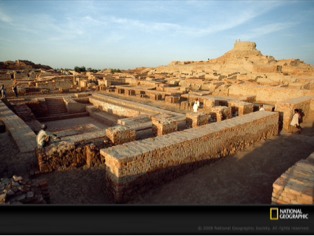Sign up for FlowVella
Sign up with FacebookAlready have an account? Sign in now
By registering you are agreeing to our
Terms of Service
Loading Flow


Indus River Valley Civilization

Chapter 3 Section 1
The earliest South-Asian civilization arrived at the Indus River Valley around 2600 BC. 700 years later, they were gone and left little writing to go off of except for some brief passages on a few clay seals. Harappa and Mohenjo-Daro are believed to be the twin capitals at the time. The large, carefully planned. Mohenjo-Daro is known for being so organized. The Indus houses, made out of brick, had complex plumbing systems with baths, drains and water chutes that led into sewers. It is believed that the Indus River Valley settlers were polytheistic and viewed some animals such as bulls and buffalo as sacred. Around 1900 BC when the use of writing halted, Mohenjo-Daro was abandoned and crude pottery replaced the finer works of art, it was clear that the civilization had declined. Though we are not sure how they declined, we assume that powerful invaders took over and began to rule or that there was a flood.
Most people were farmers that grew wheat, barley, melons and dates. They were also the first to grow cotton that they used to sew clothes. Although farming was more common, some people were merchants and traders. Their ships carried cotton cloth, pearls, grain, copper and ivory combs to distant lands, including Sumer.